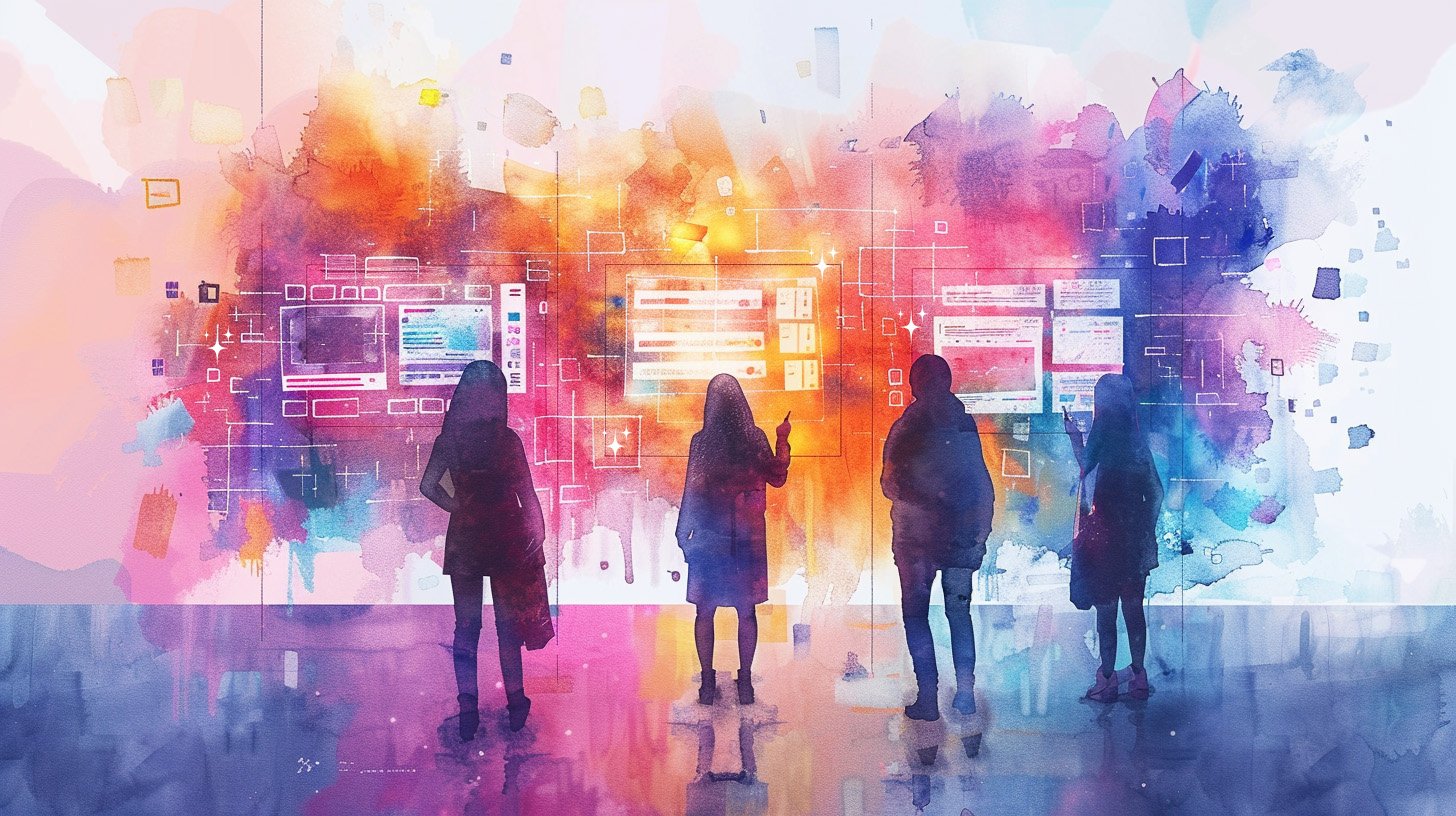In an era where digital transformation dictates market dynamics, businesses grapple with delivering exceptional user experiences (UX) that captivate and retain customers.
Traditional UX design and optimization methods struggle to keep pace with rapid changes in consumer expectations and technological advancements. This gap has catalyzed the integration of artificial intelligence (AI) into digital customer experience platforms, transforming AI from a simple tool into a crucial component of success.
Imagine a workspace where AI does not threaten your role but enhances your capacity to innovate and execute. Integrating AI into digital experimentation offers a unique synergy; it augments human creativity with profound productivity enhancements. The rewards can be significant for those willing to embrace and co-create with AI, potentially setting them apart from those who hesitate. This transition into co-creation accelerates the design process and elevates the quality of user interactions, ensuring that every digital touchpoint is engaging and effective.
Embrace AI as a powerful collaborator in the UX design process to enhance your creative capacity and meet rapidly evolving user expectations.
Understanding AI’s Role in the User Experience Design Process
AI in digital marketing, specifically, its role in UX design spans both analytical and creative realms. It processes vast amounts of user data to uncover behavioral insights and trends crucial for informed design decisions. Moreover, AI enhances creativity by automating the production of design elements, allowing for faster iteration and innovative solutions that improve user interaction.
AI enhances UX design by automating analytics and creative processes, enabling faster and more innovative user experience solutions.
Specific AI Tools that Enhance the UX Design Process
The digital marketplace offers a range of AI customer experience software that significantly contribute to the UX design and optimization processes by automating routine tasks and providing deep insights. Instead of just choosing one, consider curating a custom tool stack that complements your specific needs:
Evolv AI
|
|
|
Adobe XD with Adobe Sensei
|
|
|
Optimizely
|
|
|
Dynamic Yield
|
|
|
Crazy Egg
|
|
|
Consider a mix of AI tools tailored to fit specific needs and challenges to enhance UX design and optimization processes.
Evaluation Criteria for Choosing the Right Tool Stack
When integrating AI tools into the UX design process, consider these factors:
- Compatibility with existing workflows: Ensure that the tool integrates seamlessly with your current tech stack.
- Ease of use versus functionality: Balance a user-friendly interface with the need for advanced features.
- Cost-effectiveness: Consider the ROI, evaluating subscription or purchase costs against the features offered.
- Support and community: Look for active user communities and robust support to maximize the tool's potential.
Creating a customized tool stack that addresses specific needs rather than relying on a single solution allows for greater flexibility and efficiency in your UX design and optimization efforts.
Enhancing User Engagement and Conversion Rates through AI
AI dramatically enhances user engagement and conversion by personalizing user experiences and optimizing content in real-time. Here are some scenarios where AI-driven co-creation has led to substantial improvements:
-
Personalized User Journeys: E-commerce sites that use AI to offer personalized product recommendations see increased conversion and repeat visits.
-
Dynamic Content Optimization: News portals that adjust content based on user preferences witness higher engagement and subscription rates.
-
Real-Time A/B Testing: Continuous testing of landing page elements like CTAs and images maximizes user experience and boosts conversions.
AI-driven personalization and real-time optimization significantly enhance user engagement and conversion rates.
The Role of AI in Continuous Learning and Optimization
AI excels at continuously learning from user interactions and adapting strategies in real-time, making it an indispensable tool in the digital experimentation landscape. It predicts and adjusts to user behavior changes, ensuring that the digital experience remains optimal without constant human oversight.
Conclusion
Incorporating AI into the UX design process enhances human creativity rather than replacing it. The tools and platforms discussed provide robust frameworks for co-creating with AI, enabling UX designers and digital optimization managers to transform user experiences profoundly. As businesses consider these technologies, focusing on how AI can complement and amplify the team’s capabilities will be key to driving innovation and achieving both superior engagement and conversion rates.
AI in UX design fosters a collaborative environment where technology amplifies creativity, leading to innovative and effective user experience strategies.
FAQ about Enhancing UX with AI
Q: How does AI enhance the user experience design process?
AI enhances the UX design process by automating the analysis of large data sets, providing insights into user behavior, and generating design elements automatically. This allows UX designers to focus on creative problem-solving and innovation, speeding up the design process and increasing the effectiveness of user interactions.
Q: Can AI replace human creativity in UX design?
No, AI is not a replacement for human creativity but a supplement that enhances it. AI handles routine and data-intensive tasks, allowing human designers to apply their creative skills more effectively and innovate within the UX design process.
Q: What are some specific AI tools that improve UX design?
Some AI tools that improve UX design include Adobe XD with Adobe Sensei for automated animations and responsive designs, Evolv AI for real-time personalization and optimization, and Crazy Egg for detailed heatmaps and user interaction insights.
Q: How do AI tools personalize user experiences?
AI tools personalize user experiences by analyzing user data such as past behavior, preferences, and real-time interactions. They use this data to dynamically tailor content, recommendations, and features, ensuring that each user encounters a unique and relevant digital experience.
Q: What should be considered when choosing AI tools for UX design?
When choosing AI tools for UX design, consider their compatibility with existing workflows, the balance between ease of use and advanced features, cost-effectiveness, and the support and community available. Selecting tools that align with specific business needs and have the ability to integrate smoothly into the current technological setup is important.

 Megan Wells
Megan Wells







